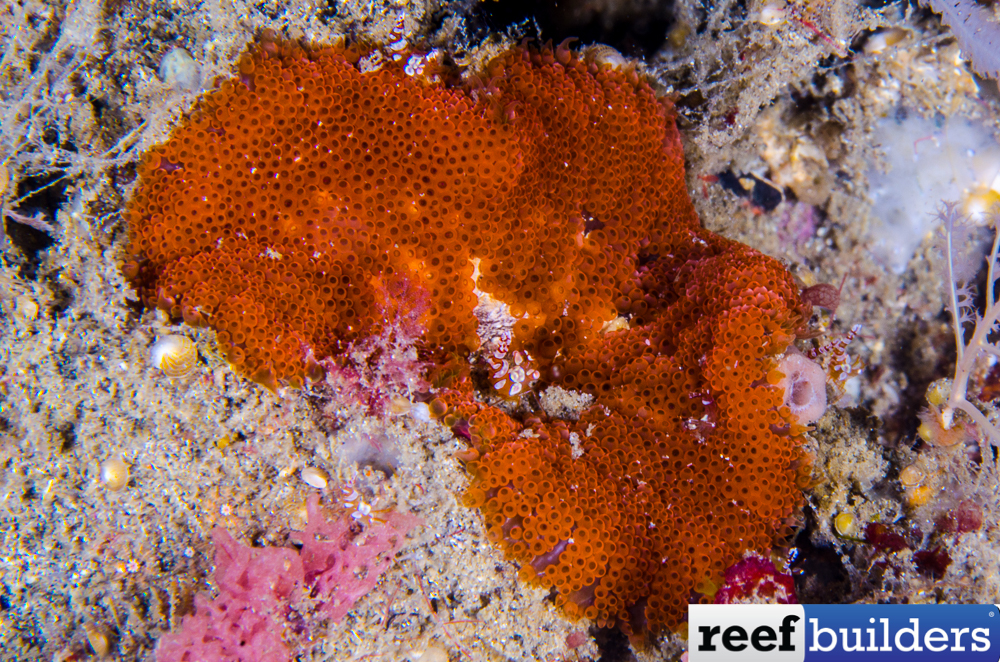Mini maxi Carpet anemones, Homactis tapetum, have been a hot commodity from Vietnam for a long time already. They used to come in all possible coloration, and it took us quite a long time to actually discover their habitat in the wild but the only few proper information, including the correct scientific name was found in the new book from Indo-Pacific Corals that we highly recommend.

Found in Deep Habitat:
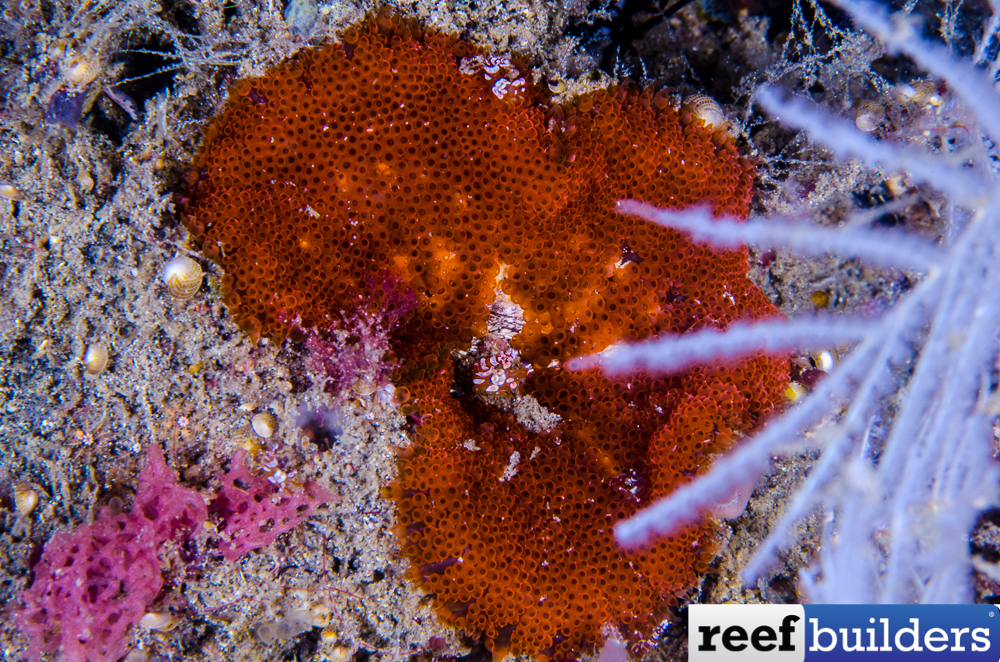
It’s only since the discovery of the bright red Mini-Maxi Carpet in Indonesia, that they started to become a hot commodity in Indonesia too. Its price was always high, and it’s only since we found some that we understood why they would worth that much. Since we explored quite a lot of shallow water habitat, we tend to look for interesting stuff deeper and deeper, so we try to spend as much time as possible on these deep sandy, rich habitat full of surprises. Now that we mastered the timing in order to get down there, when conditions are right, we can literally put our head into the substrate. It’s only below 90 ft (30 m), in rich, turbid water, with just enough water flow, to bring a constant supply of food, that we found some Homactis tapetum.
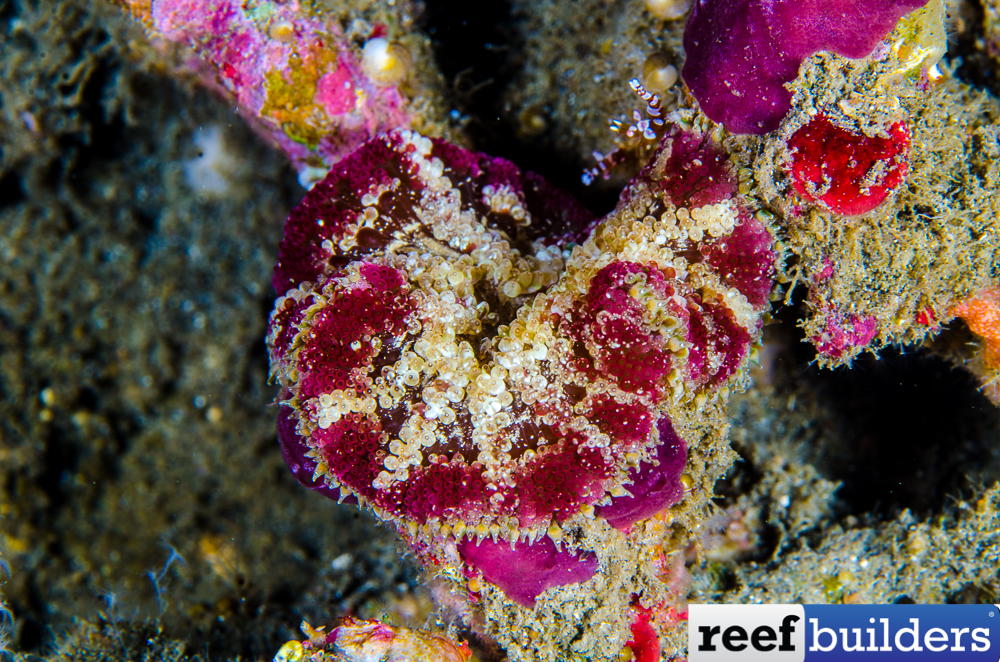
A Perfect Camouflage coloration:
Their patchy, stripped, vivid coloration, makes an effective form of camouflage among other sessile invertebrates. Especially in deep water habitat where color are highly different to the human eye. All the bright red, yellow, purple coloration just become dull grey bellow 60 ft (20 m).
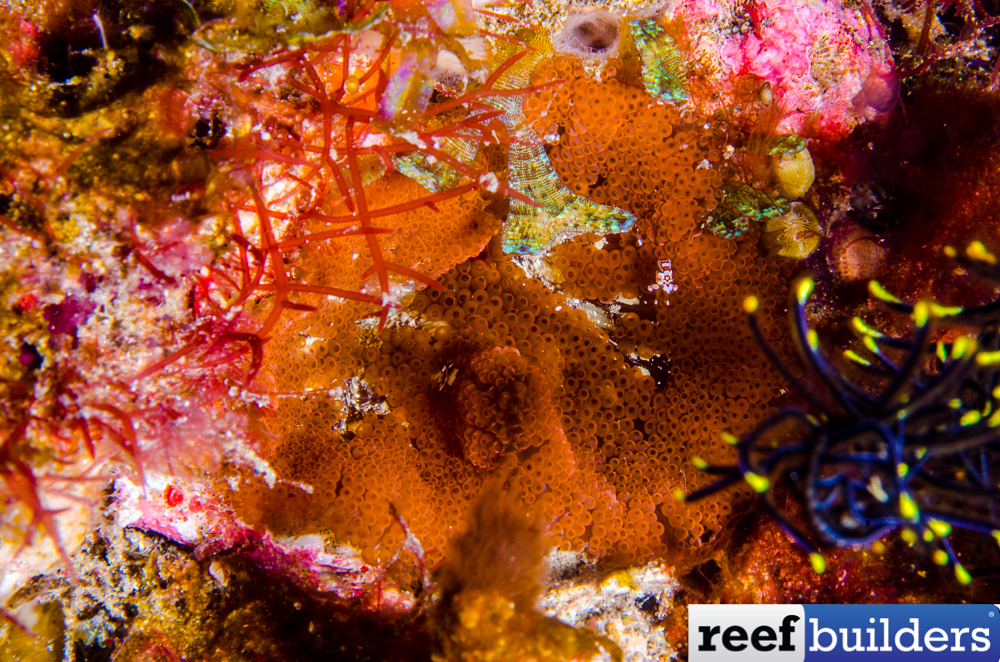
It takes a low flight mode dive profile, the head into the substrate, to actually distinguish them. The funny part about finding mini maxi carpet anemones is it’s actually the symbiotic sexy shrimp (Thor amboinensis) that we spotted first and actually gave them away.

We always found at least a pair of these shrimp living together around the Mini-Maxi carpet.
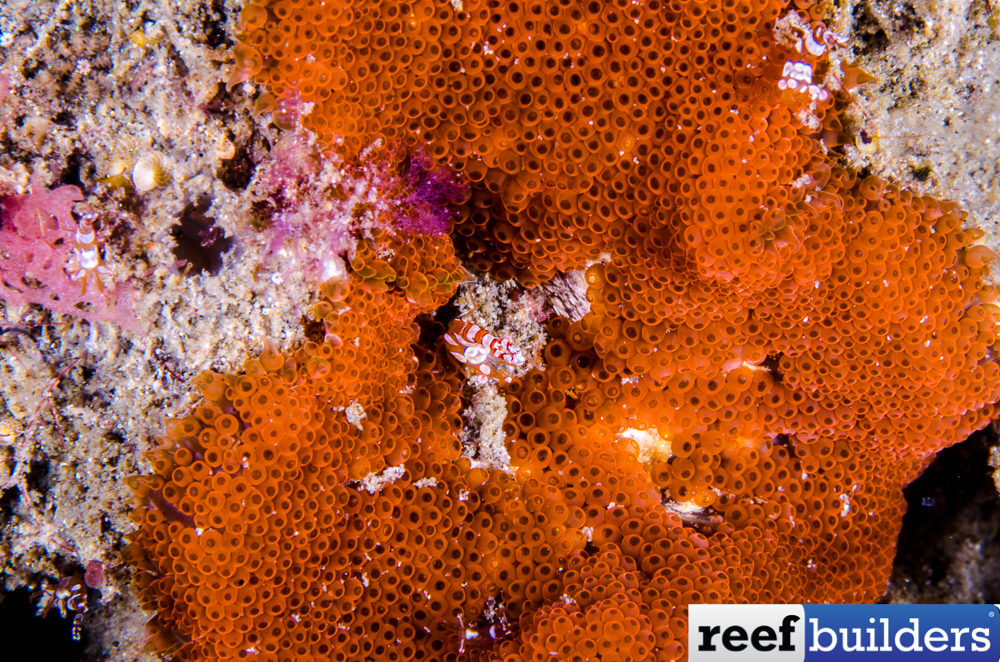
The new scientific name for the Mini-Maxi Carpet is Homactis tapetum, and is not part of the classic Carpet anemones as Joe Rowlett puts it in its book: H. tapetum, formerly included in Stichodactyla. It differs from the true carpet anemones in its much smaller size ( 10 cm in oral disc diameter), the absence of verrucae, and the distinctive shape and arrangement of its tentacles-those along the margin are comparatively long and pointed, contrasting with the short, blunt endocoelic tentacles which forms rows up to 8 wide.
Always tucked in a rock hole:
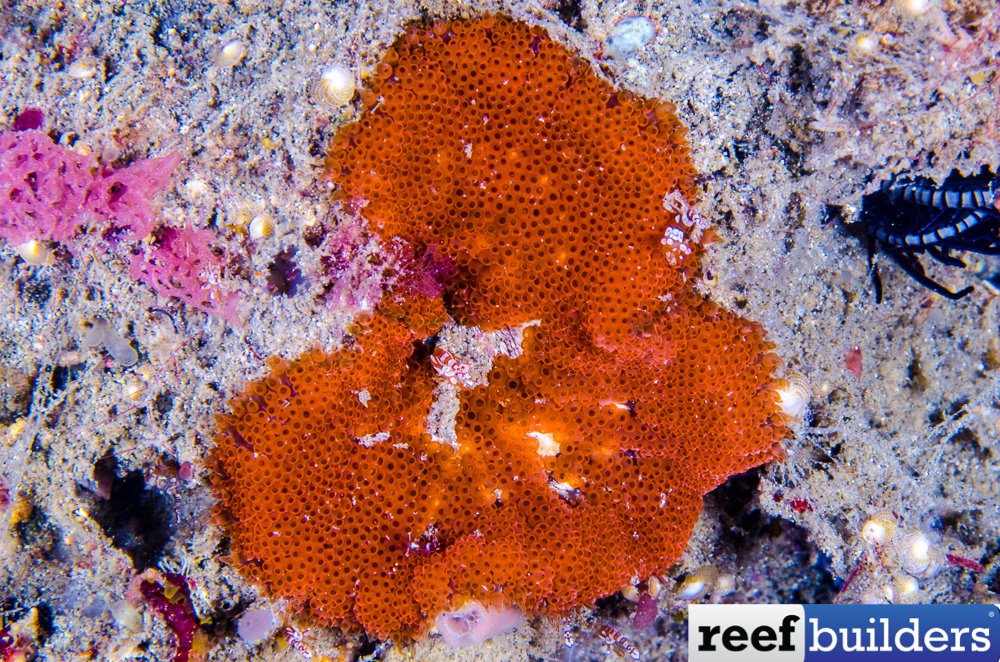
We found out that Homactis tapetum always lived on a small piece of rock with its foot lodged in a hole, where it can retract to look for cover in case of danger. It doesn’t retract as fast as carpet anemones do, though.
Our experience in aquarium is that it can be quite difficult to settle in an aquarium, and now we think we know why. When first put in an aquarium, they tend to disappear in the rock work, and often end up swallowed into a pump or overflow. The aquarium light are most of the time too strong for them, so they directly look for shade. Then because they come with no rock, they need to find a nice shaded deep enough crevice with just enough flow to bring food. For that reason it’s better to acclimatize mini maxi carpet anemone in a secure place or container, ricordea box, with a small rock. Once it’s firmly attached, we can now move the rock to the right spot in the tank.
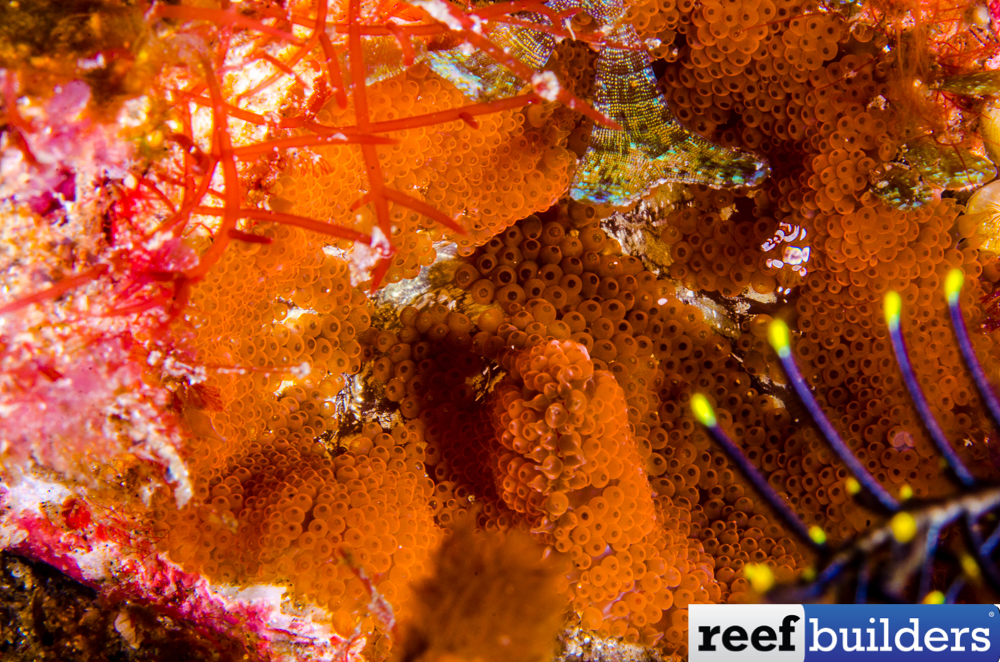
Once this mini maxi anemone is acclimated it’s a very nice addition to any tank, and can even become the centerpiece of a nano tank.


